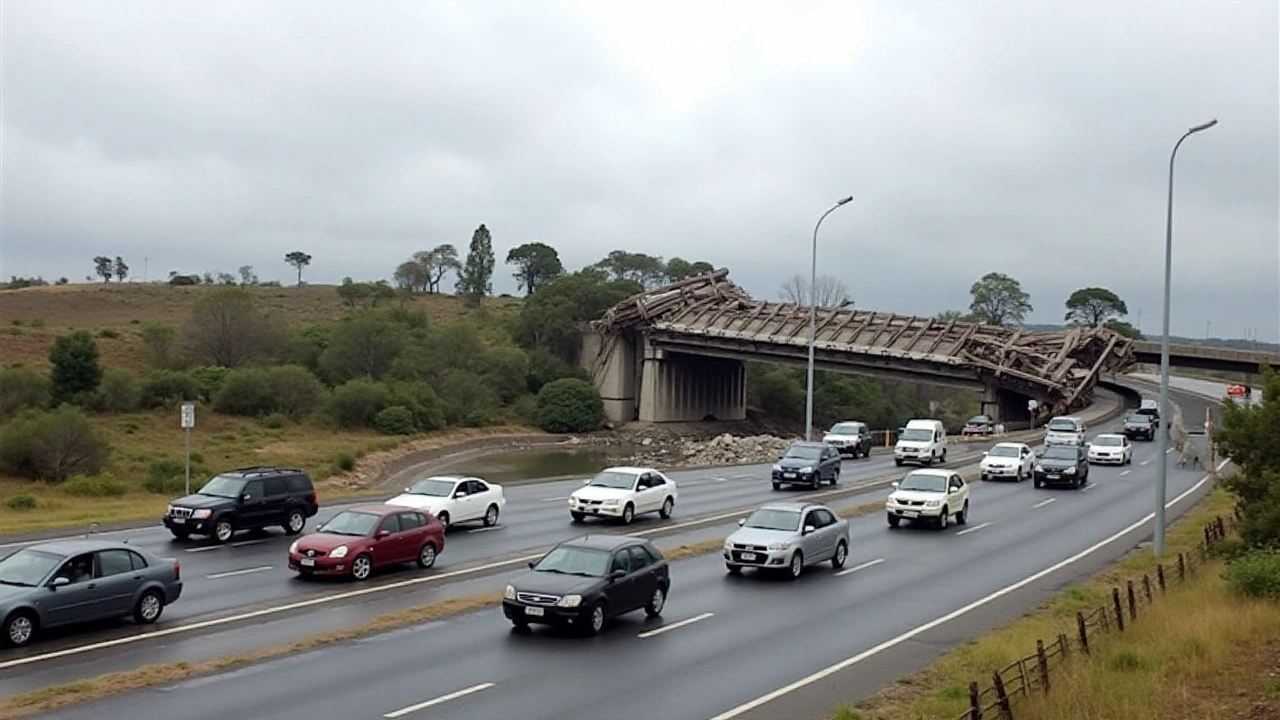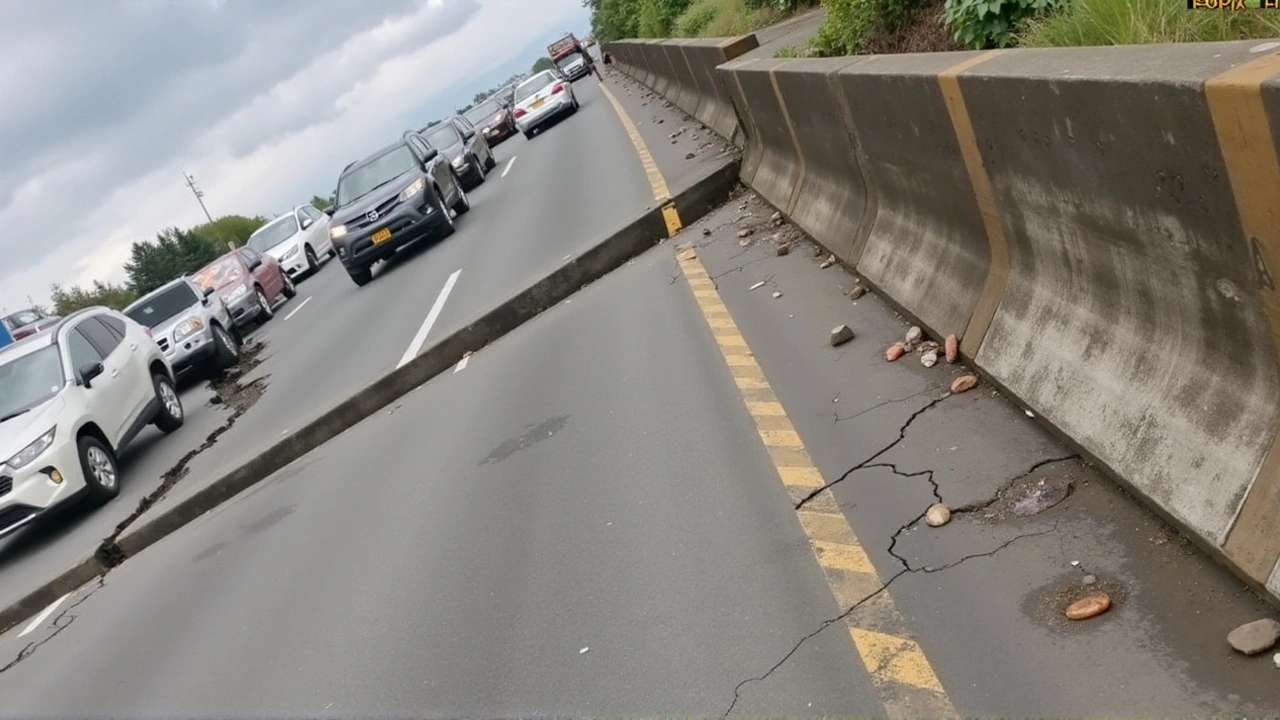N2 Bridge Collapse Creates Widespread Traffic Havoc in Durban
In the bustling city of Durban, a city known for its lively pace and rapid growth, the N2 freeway serves as an essential artery for the daily commute of thousands. On November 5, 2024, however, that artery was shockingly severed when a section of the N2 bridge suddenly collapsed, sending ripples of disruption through the region. The collapse has caused significant traffic disturbances, stranding motorists and throwing daily schedules into disarray. As the news spread, travelers who rely on this major route have been advised to steer clear of the area to prevent further congestion and facilitate the swift commencement of repair works. This catastrophic event has forced local authorities and transportation officials into immediate emergency response actions, striving to analyze the situation and chart out an effective and swift recovery plan.
Immediate Aftermath and Traffic Chaos
The collapse of the bridge on such a critical transport corridor has been more than a mere inconvenience – it spells chaos for routine travel and commercial logistics that depend heavily on this freeway. The total closure of the N2 following the incident has compelled the drivers to either sit through lengthy waits or chart complex detours through unfamiliar paths, exacerbating frustration levels. On the ground, traffic backups extended for miles, impacting not only those directly on the N2 but creating a cascading effect on adjacent routes, overwhelming alternative roads that were never designed to handle such volumes. This perturbation highlights the fragility of urban transport systems when hit by unforeseen infrastructural failings. With the bridge closure not expected to resolve swiftly, commuters, freight companies, and emergency services now face the daunting challenge of navigating an already stressed infrastructure network.
Safety Warnings and Recommendations
Amidst the crumbling concrete and twisted steel of the N2 bridge, safety concerns loom large over Durban. Officials from KwaZulu-Natal Road Traffic have been quick to issue warnings, urging the public to adhere strictly to detour signs and avoid delving too close to the affected zones. With investigations into the root cause of the collapse still in progress, the area is regarded as unstable and unpredictable, making it inherently hazardous. Such cautionary measures are crucial not just for the safety of the public but also for enabling unhindered access to repair crews and safety inspectors tasked with stabilization and reconstruction efforts. Motorists are being strongly encouraged to explore public transportation options or flexible working arrangements where possible to mitigate the burgeoning crisis.
Unveiling the Cause
The enigmatic cause behind the N2 bridge's collapse has spurred a vigorous investigation as experts clamor for answers to prevent future disasters. Initial site evaluations indicate potential structural weaknesses, but it will take a thorough forensic examination and analysis to uncover exact details. There are speculations perhaps about the quality of materials used, design flaws, or even adequacies in routine maintenance, adding layers of complexity to the investigative process. These contemplations only underscore the pressing need for rigorous standards in overseeing South Africa's infrastructure health. Transportation and civic policy stakeholders can ill afford a repeat of such incidents, as this event highlights glaring vulnerabilities in infrastructure that could impact not only public safety but economic vitality if left unaddressed.

Moving Forward With Repair and Prevention
As news of the collapse travels, the focus not only remains on immediate remediation but also on long-term preventive measures. Repairing the bridge and restoring the N2 freeway is very high on the agenda for local governing bodies, and they are poised to allocate resources and manpower for an expeditious fix. Yet, the situation calls for more than just patchwork solutions; it beckons a stew of strategic planning and forward-thinking to build resilient infrastructure in Durban and beyond. Investing in durable, robust materials, enhancing monitoring protocols, and setting aside emergency funds for swift interventions are pressing topics for policy dialogues moving forward. Strengthening inspection and maintenance regimes will be invaluable in preserving safety and ensuring infrastructural reliability over the long haul.
Community Impact and Resilience
The ramifications of the bridge collapse extend far beyond the honing of traffic and infrastructure issues alone. It invariably impacts the community, challenging them to adapt in remarkable ways. Businesses grappling with compromised logistics, students facing educational access hurdles, and daily commuters evolving into planners and strategists to avoid the epicenter of disruption all speak to the enduring resilience of those affected. This period of trial is a stark reminder that urban planning and community dynamics are deeply interlinked, with pertinent lessons to be woven into the city's fabric. Looking forward, galvanizing community engagement and tapping into the collective strength of the affected populace will be key in navigating the complexities of such disruptive events.

